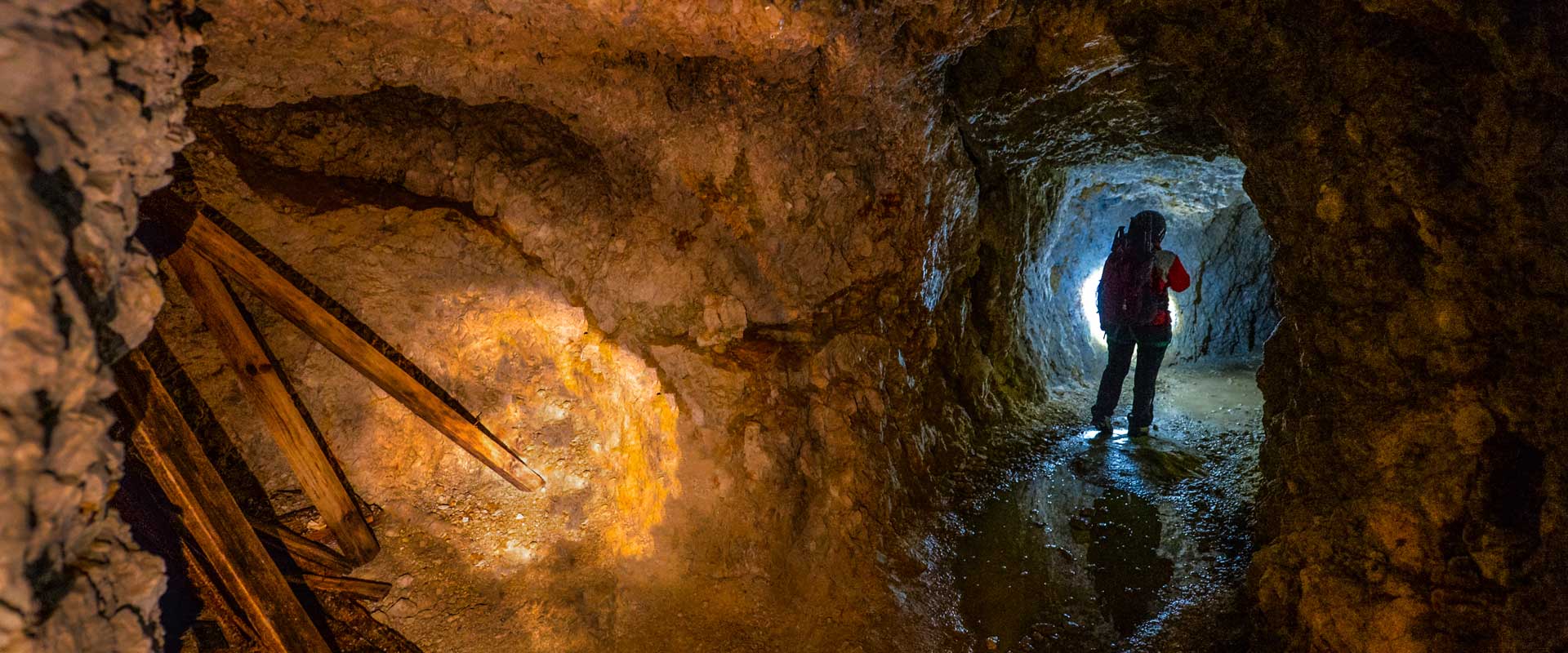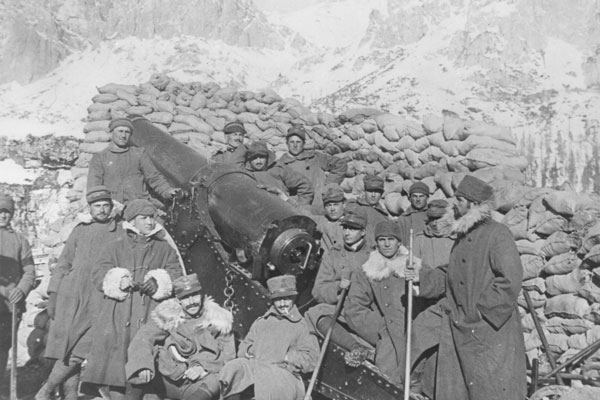- TIPS
- SUMMER
- WINTER
- HOSPITALITY
- HISTORY AND MUSEUMS
- INFO
- VIDEO
- DELICIOUS APP

© Stefano Zardini
- TIPS
- SUMMER
- WINTER
- HOSPITALITY
- HISTORY AND MUSEUMS
- INFO
- VIDEO
- DELICIOUS APP

© Stefano Zardini
The Italian advance towards the Badia Valley, the Puster Valley and Brenner was halted at the Valparola Pass in the face of the Austrian trenches at the Vonbank emplacement.
The trenches of the two opposing armies snaked their way along the summits of the mountains around Lagazuoi: Tofane, Castelletto, Grande Lagazuoi, Sasso di Stria, Settsas, Col di Lana and Marmolada.
At the 5 Torri (Five Towers) and on Mt. Averau spread the second Italian line with artillery emplacements and floodlights to light up the mountain side of Mt. Lagazuoi.
Soon it was clear to both sides that the best protection from enemy artillery fire was provided by the mountain itself and so began the excavations with emplacements and encampments transforming Piccolo Lagazuoi into a natural fortification.
The only way to conquer the enemy’s emplacements was to detonate a mine below them.

The emplacements inside the tunnel offered protection from wind and enemy fire, but no real safety, because the dull noise of the enemy’s excavations threatened the soldiers with a potential mine explosion.
Five mines were blown up: four Austrian mines against the Martini Ledge and an Italian mine intended to conquer the foresummit of Mt. Lagazuoi.
The soldiers of the two armies lived inside Mt. Lagazuoi and on the Sasso di Stria until November 1, 1917, when - following the defeat of Caporetto - the Italian army had to abandon the Dolomite front.
To the Austrians, we owe the detailed plans of all the Lagazuoi galleries remained after the retreat of the Italian army in November 1917, following the defeat at Caporetto.
The illustration shows the location of the first 10 gallery systems on Piccolo Lagazuoi.
Historical Insights:

On 20th October 1915, an Alpini troop unit occupied the ledge halfway up the rock face of the Piccolo Lagazuoi, a wide rocky step which crosses the mountain and was surprisingly ignored by the Austrians.
The Martini Ledge, named after the battalion commander who occupied it, soon became a thorn in the eye of the Austrians.
From there the Italians could hit scot-free the Vonbank emplacement with machine guns and grenades.
Both armies began to dig the rock of the mountain, realizing shelters for the men and weapons and turning Mt. Lagazuoi into a fortress of the 20th century.
They soon discovered that the only way to conquer the enemy's fortified emplacements was to dig a mine tunnel, to approach the enemy this way and blow him up.
